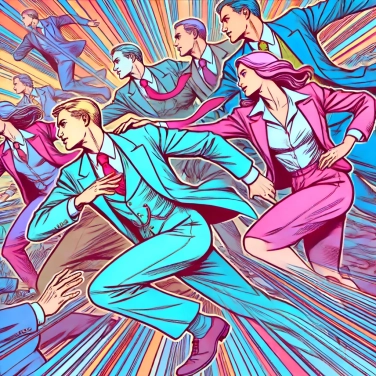Harassment can exist due to factors such as power imbalances, communication issues, learned behaviors, and permissive social norms.

Harassment often stems from social pressure to conform to certain norms or a specific model. If someone steps outside the framework – because they are different, in a minority, or even just original – they quickly become an easy target. Prejudices and cultural stereotypes increase the risk of a person being harassed, especially when they belong to a marginalized or poorly integrated group. In certain cultures or social groups, competition, envy, and the need to dominate can also drive individuals to devalue or humiliate someone else. Similarly, the pervasive trivialization or tacit acceptance of verbal or psychological violence makes the phenomenon much more common than one might think.
Harassment often has roots in psychological mechanisms where the aggressor seeks to fulfill a need for power, control, or self-affirmation. Many harassers suffer from low self-esteem and use the humiliation of others as a means to assert their superiority and reinforce their own image. In some cases, an inability to manage frustration or anger can trigger repeated and aggressive behaviors towards others. It also happens that a lack of empathy makes it difficult for them to realize the harm they inflict, allowing them to persist without feeling true guilt. A feeling of deep personal insecurity, or the need to compensate for a sense of inferiority sometimes experienced privately, drives some to target individuals deemed weaker or different. Harassment behaviors can finally stem from family patterns or unresolved past traumas on which the person reenacts destructive patterns.
The internet and social media accelerate and amplify harassment phenomena. Behind their screens, some feel protected by anonymity or virtual distance, and do not hesitate to cross boundaries they would set for themselves in real life. On apps, a rumor, for example, spreads rapidly and leaves little room for the victim to react or defend themselves. Moreover, these shared contents often remain accessible for a long time, prolonging the victims' feelings of suffering and humiliation (permanence effect). This is often referred to as cyberbullying, which is even more difficult to combat because it doesn't stop once you leave school or work: it follows us home, on our phones and computers.
In schools or at work, the overall atmosphere greatly depends on the stance that institutions take regarding harassment. When management turns a blind eye or minimizes the problem, it creates a favorable environment for abusive situations. Conversely, clear rules, regular awareness-raising, and swift interventions when a case arises significantly limit problematic behaviors. A school or workplace climate that normalizes hurtful remarks, teasing, or exclusion ultimately contributes to reinforcing the perception that harassing others is almost acceptable. When adults or authorities adopt a passive attitude, it sends a message to both victims and harassers that suffering or aggression is not a serious issue. On the contrary, institutions that implement a genuine proactive policy against these behaviors often succeed in creating respectful environments where everyone feels they belong.
The media and popular culture play a concrete role in normalizing harassment. Some content (films, series, video games, music videos) reinforces harmful concepts, such as a caricatured view of violence or certain forms of aggression. When a popular character mocks or harasses without consequences, it sends the message that these behaviors can be valued or at least tolerated. Social media also amplifies these negative patterns by promoting public mockery. The idealized representation of certain aggressive behaviors can influence young people, especially when they look up to media personalities or influencers often portrayed as “cool” or likable. The social norms disseminated by the media then subtly shape the perception of what it means to be popular, funny, or respected.
Research has shown that preventive school programs significantly reduce cases of bullying when they include regular training for students and educational staff.
A psychological study reveals that some bullies exhibit this behavior due to feelings of insecurity or personal inferiority, seeking to compensate for their low self-esteem.
More than 70% of witnesses to harassment situations choose not to intervene, often out of fear or ignorance about how to appropriately help.
Cyberbullying mainly affects adolescents aged 13 to 17, with often more severe consequences due to the anonymity and constant accessibility provided by social media.
Discuss regularly with them about their digital life, encourage them to share their online experiences, explain the potential risks of the Internet, monitor their social media use reasonably, and clearly inform them about how to ask for help and report an abusive situation.
Teasing is generally reciprocal, playful, and does not cause real suffering. In contrast, harassment is repetitive, one-sided, aims to intentionally hurt, and has a clear negative impact on the victim's well-being.
Several factors explain the behavior of harassers: a desire to dominate, a lack of empathy, personal insecurity, or family issues. Sometimes, harassment is also an inappropriate way to socially integrate or to respond to group pressure.
Directly support the person being harassed, report the situation to competent authorities (teachers, HR, officials), and avoid participating indirectly (for example, don’t laugh or share hurtful content). A quick response and solidarity with the victim can help put an end to harassment swiftly.
The signs often include a socially isolated victim who is anxious, depressed, or whose behavior changes suddenly. Victims may also exhibit unexplained absences, a sudden decline in academic or work performance, or show unusual physical or psychological marks.

No one has answered this quiz yet, be the first!' :-)
Question 1/6